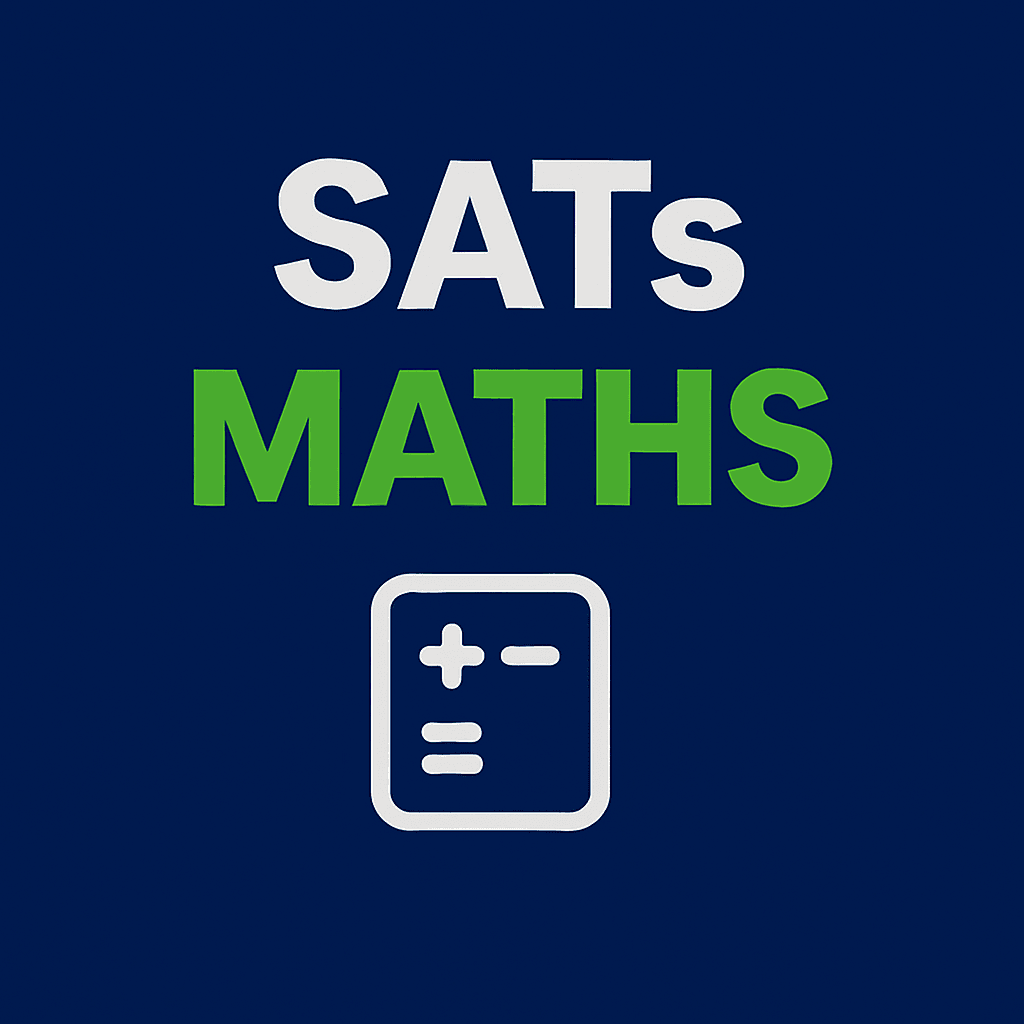Table of Contents
ToggleMastering Ratios and Proportions for SAT Math Success
Introduction
Ratios and proportions are critical concepts in the SAT Math section. They test your ability to compare quantities, scale relationships, and solve real-world problems. Understanding these concepts can help you gain quick and easy points.
This guide will cover:
- The basics of ratios and proportions.
- Step-by-step strategies for solving problems.
- Examples and practice questions to solidify your understanding.
What are Ratios and Proportions?
- A ratio compares two quantities using division. It can be written as:
 or
or  .
.
Example:
The ratio of boys to girls in a class is
 .
.- A proportion is an equation that shows two ratios are equal.
Example:
![Rendered by QuickLaTeX.com \[ \frac{a}{b} = \frac{c}{d} \]](data:image/svg+xml;base64,PHN2ZyB4bWxucz0iaHR0cDovL3d3dy53My5vcmcvMjAwMC9zdmciIHdpZHRoPSI0NyIgaGVpZ2h0PSIzMiIgdmlld0JveD0iMCAwIDQ3IDMyIj48cmVjdCB3aWR0aD0iMTAwJSIgaGVpZ2h0PSIxMDAlIiBzdHlsZT0iZmlsbDojY2ZkNGRiO2ZpbGwtb3BhY2l0eTogMC4xOyIvPjwvc3ZnPg==)
If
 , the two ratios form a proportion.
, the two ratios form a proportion.- A ratio compares two quantities using division. It can be written as:
Solving Direct Proportions
When two quantities increase or decrease together at the same rate, they are directly proportional.
Formula:
![Rendered by QuickLaTeX.com \[ \frac{x_1}{y_1} = \frac{x_2}{y_2} \]](data:image/svg+xml;base64,PHN2ZyB4bWxucz0iaHR0cDovL3d3dy53My5vcmcvMjAwMC9zdmciIHdpZHRoPSI2NCIgaGVpZ2h0PSIzNiIgdmlld0JveD0iMCAwIDY0IDM2Ij48cmVjdCB3aWR0aD0iMTAwJSIgaGVpZ2h0PSIxMDAlIiBzdHlsZT0iZmlsbDojY2ZkNGRiO2ZpbGwtb3BhY2l0eTogMC4xOyIvPjwvc3ZnPg==)
Example:
If 4 apples cost $8, how much do 10 apples cost?
Solution:
- Set up the proportion:
![Rendered by QuickLaTeX.com \[ \frac{4}{8} = \frac{10}{x} \]](data:image/svg+xml;base64,PHN2ZyB4bWxucz0iaHR0cDovL3d3dy53My5vcmcvMjAwMC9zdmciIHdpZHRoPSI1NCIgaGVpZ2h0PSIzNiIgdmlld0JveD0iMCAwIDU0IDM2Ij48cmVjdCB3aWR0aD0iMTAwJSIgaGVpZ2h0PSIxMDAlIiBzdHlsZT0iZmlsbDojY2ZkNGRiO2ZpbGwtb3BhY2l0eTogMC4xOyIvPjwvc3ZnPg==)
- Cross multiply:
![Rendered by QuickLaTeX.com \[ 4x = 8 \times 10 \implies x = 20 \]](data:image/svg+xml;base64,PHN2ZyB4bWxucz0iaHR0cDovL3d3dy53My5vcmcvMjAwMC9zdmciIHdpZHRoPSIxOTAiIGhlaWdodD0iMTMiIHZpZXdCb3g9IjAgMCAxOTAgMTMiPjxyZWN0IHdpZHRoPSIxMDAlIiBoZWlnaHQ9IjEwMCUiIHN0eWxlPSJmaWxsOiNjZmQ0ZGI7ZmlsbC1vcGFjaXR5OiAwLjE7Ii8+PC9zdmc+)
Answer: 10 apples cost $20.
Solving Inverse Proportions
When one quantity increases as the other decreases, they are inversely proportional.
Formula:
![Rendered by QuickLaTeX.com \[ x_1 \cdot y_1 = x_2 \cdot y_2 \]](data:image/svg+xml;base64,PHN2ZyB4bWxucz0iaHR0cDovL3d3dy53My5vcmcvMjAwMC9zdmciIHdpZHRoPSIxMTciIGhlaWdodD0iMTIiIHZpZXdCb3g9IjAgMCAxMTcgMTIiPjxyZWN0IHdpZHRoPSIxMDAlIiBoZWlnaHQ9IjEwMCUiIHN0eWxlPSJmaWxsOiNjZmQ0ZGI7ZmlsbC1vcGFjaXR5OiAwLjE7Ii8+PC9zdmc+)
Example:
If 3 workers complete a task in 12 hours, how long will it take 6 workers (working at the same rate)?
Solution:
- Use the inverse proportion formula:
![Rendered by QuickLaTeX.com \[ 3 \cdot 12 = 6 \cdot x \]](data:image/svg+xml;base64,PHN2ZyB4bWxucz0iaHR0cDovL3d3dy53My5vcmcvMjAwMC9zdmciIHdpZHRoPSI5NSIgaGVpZ2h0PSIxMiIgdmlld0JveD0iMCAwIDk1IDEyIj48cmVjdCB3aWR0aD0iMTAwJSIgaGVpZ2h0PSIxMDAlIiBzdHlsZT0iZmlsbDojY2ZkNGRiO2ZpbGwtb3BhY2l0eTogMC4xOyIvPjwvc3ZnPg==)
- Solve for
 :
:
- Solve for
![Rendered by QuickLaTeX.com \[ 36 = 6x \implies x = 6 \]](data:image/svg+xml;base64,PHN2ZyB4bWxucz0iaHR0cDovL3d3dy53My5vcmcvMjAwMC9zdmciIHdpZHRoPSIxNTIiIGhlaWdodD0iMTMiIHZpZXdCb3g9IjAgMCAxNTIgMTMiPjxyZWN0IHdpZHRoPSIxMDAlIiBoZWlnaHQ9IjEwMCUiIHN0eWxlPSJmaWxsOiNjZmQ0ZGI7ZmlsbC1vcGFjaXR5OiAwLjE7Ii8+PC9zdmc+)
Answer: It will take 6 hours.
Practice Question
Question: The ratio of sugar to flour in a recipe is
 . If you use 15 cups of flour, how much sugar is needed?
. If you use 15 cups of flour, how much sugar is needed?Solution:
- Set up the proportion:
![Rendered by QuickLaTeX.com \[ \frac{3}{5} = \frac{x}{15} \]](data:image/svg+xml;base64,PHN2ZyB4bWxucz0iaHR0cDovL3d3dy53My5vcmcvMjAwMC9zdmciIHdpZHRoPSI1NCIgaGVpZ2h0PSIzNiIgdmlld0JveD0iMCAwIDU0IDM2Ij48cmVjdCB3aWR0aD0iMTAwJSIgaGVpZ2h0PSIxMDAlIiBzdHlsZT0iZmlsbDojY2ZkNGRiO2ZpbGwtb3BhY2l0eTogMC4xOyIvPjwvc3ZnPg==)
- Cross multiply:
![Rendered by QuickLaTeX.com \[ 5x = 3 \times 15 \implies x = 9 \]](data:image/svg+xml;base64,PHN2ZyB4bWxucz0iaHR0cDovL3d3dy53My5vcmcvMjAwMC9zdmciIHdpZHRoPSIxODIiIGhlaWdodD0iMTQiIHZpZXdCb3g9IjAgMCAxODIgMTQiPjxyZWN0IHdpZHRoPSIxMDAlIiBoZWlnaHQ9IjEwMCUiIHN0eWxlPSJmaWxsOiNjZmQ0ZGI7ZmlsbC1vcGFjaXR5OiAwLjE7Ii8+PC9zdmc+)
Answer: 9 cups of sugar.
Common Mistakes to Avoid
- Incorrect Setup: Always match corresponding parts of the ratio.
- Forgetting to Cross Multiply: Use cross multiplication to solve proportions efficiently.
- Ignoring Units: Check that quantities have the same units before solving.
Summary
Mastering ratios and proportions is essential for SAT Math success. By understanding direct and inverse relationships and practising regularly, you’ll confidently solve these problems on test day.
📅 Book Your Free SAT Math Consultation Today!
Skinat Tuition | Building Confidence, Inspiring Excellence Globally.


